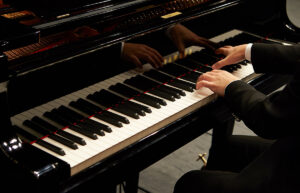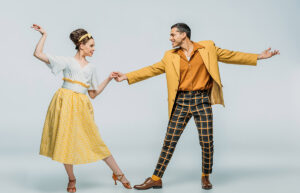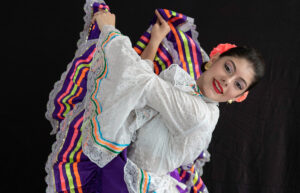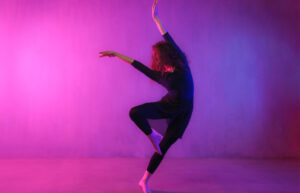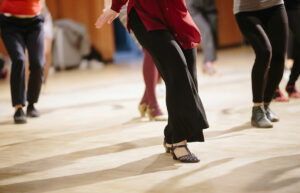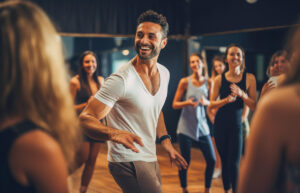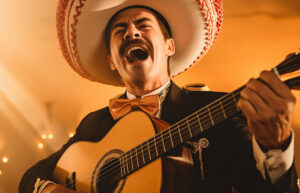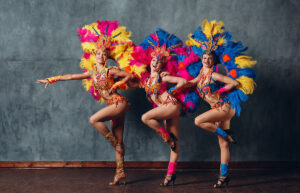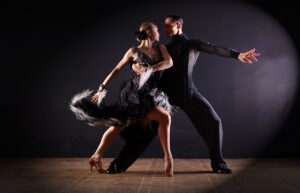How to Salsa Dance: Styles, Steps, and Expert Tips for Mastering the Rhythm

If you have ever been captivated by the fiery passion of salsa dancing and yearned to learn the steps yourself, you are in the right place. This guide is designed to take you through the different styles of salsa, how to salsa dance, and some expert tips and techniques to help you master the rhythm and flow of salsa.
Welcome to TheDemoStop, now join the community!
Connect with artists, fans and producers around the world.
What is salsa dance?
Salsa is a lively Latin dance that goes hand in hand with salsa music, originating from the Caribbean, especially Cuba. It gained popularity in New York City during the 1960s, blending elements of Cuban dances like mambo, pachanga, and rumba with American dance styles like swing and tap.
Salsa dance styles
New York Style
New York style salsa, also known as “On2” salsa, is a popular salsa dancing style originating from the dance clubs of New York City. Its key feature is its unique timing, danced to the second beat of the music, giving it a distinct flavor and a more laid-back, smooth feel compared to the traditional ON1 style, which is danced to the first beat.
Los Angeles Style
Los Angeles Style, often referred to as “LA Style” salsa, is a distinct form of salsa dancing that originated in the dance clubs of Los Angeles. It is one of the major styles of salsa and is known for its linear movements, dynamic footwork, and flashy turns. Unlike New York Style salsa, LA Style is typically danced on the first beat of the music, commonly referred to as “ON1” timing.
Circular Style
Circular-style salsa, also known as Cuban-style salsa or Casino Rueda, is a type of salsa dancing that emphasizes circular patterns and group dynamics. It originated from traditional Cuban dances like Son, Rumba, and Afro-Cuban styles, evolving into its distinct form of salsa.
When performed in a group or “rueda” (wheel), it’s often referred to as “Casino Rueda.” In Rueda de Casino, couples dance in a circle, with a caller prompting different moves for them to execute simultaneously. Partners frequently switch during the dance, fostering a strong sense of community and interaction among the dancers.
Basic salsa steps
Salsa basic on the spot
- Begin with your feet together
- Step in place with your left foot
- Bring your right foot to meet your left
- Step in place with your right foot
- Bring your left foot to meet your right
Salsa basic side-to-side
- Start with your feet together
- Step to the side with your left foot
- Bring your right foot to meet your left
- Step to the side with your left foot
- Bring your right foot to meet your left
Salsa back basic
- Start with your feet together
- Step backwards with your left foot
- Bring your right foot to meet your left
- Step backwards with your right foot
- Bring your left foot to meet your right
Salsa basic front-to-back
- Start with your feet together
- Step forward with your left foot
- Bring your right foot to meet your left
- Step backwards with your left foot
- Bring your right foot to meet your left
Right turn
- Start with your regular basic steps.
- On the 2nd count, do a 180-degree turn to your right.
- Complete a 360-degree turn by pivoting to face the front on the 5th count.
- For the leader: Step forward with your left foot, shift to the right, then bring your right foot to meet your left.
- For the follower: Step backwards with your right foot, shift to the right, and then bring your left foot to meet your right.
Left turn
- Start with your regular basic steps.
- On the 3rd count, do a 180-degree turn to your left.
- Complete a 360-degree turn by pivoting to face the front on the 6th count.
- For the leader: Step forward with your right foot, shift to the left, then bring your left foot to meet your right.
- For the follower: Step backwards with your left foot, shift to the left, and then bring your right foot to meet your left.
Welcome to TheDemoStop, now join the community!
Connect with artists, fans and producers around the world.
Cross-body lead
- The lead gets off the follower’s line of dance.
- The follower is given a clear path to cross in front and arrive at the other side, switching places.
Hesitation/block/check
- A pause or check in the movement is often used to style or sync with the music.
- The leader stops or blocks the follower’s movement.
- The follower is sent back in the direction they came.
- It is also called hesitation when you do it during a cross-body lead.
New York walk
- This is a variation of the cross-body lead.
- It is a traveling step that involves walking forward stylishly.
- At the end of the move, the following pivots to the right instead of the left.
Change of Place/Enchufa
- Lead the follower to move to a different position, often involving a turn.
- This is the simplest way for the lead and follower to switch positions.
- There are many fun variations you can do using different handholds.
Tips for learning salsa
Master the basics first
Begin by learning the basic steps, understanding the rhythm, and familiarizing yourself with the basic salsa dance holds and positions. Building a strong foundation in the fundamental movements will make progressing to more advanced patterns and styles easier.
Practice constantly
Like any skill, salsa improves with practice. Regular practice helps reinforce muscle memory, enhances coordination, and builds confidence on the dance floor. Consider practicing with a partner and independently to improve your overall dance skills.
Be patient
Knowing how to salsa dance, like any dance, takes time and patience. Don’t get discouraged if you don’t master every move immediately. Celebrate small victories, and be patient with yourself as you progress. It’s a journey; enjoying the process is key to long-term success.
Lead and follow
If you are dancing with a partner, understanding the lead and follow roles is essential. Leaders initiate the movements, while followers respond to the leads. Learning to communicate through non-verbal cues is crucial for a smooth dance. Even if you primarily identify with one role, having a basic understanding of both can enhance your overall dance experience.
Conclusion
What is salsa dance?
Salsa is a Latin American dance from Cuba characterized by its vibrant and rhythmic movements, intricate footwork, and dynamic partner connections.
Salsa dance styles
- New York style
- Los Angeles style
- Circular style
Essential steps of salsa
The basic salsa dance rhythm is three steps for every four musical beats.
Basic salsa steps
- Basic salsa step
- Right turn
- Left turn
- Cross-body lead
- Hesitation/block/check
- New York walk
- Change of place/Enchufa
Tips for learning salsa
- Master the basics first
- Practice constantly
- Be patient
- Lead and follow
FAQs
What is salsa dance?
Salsa is a dynamic and lively Latin dance style characterized by energetic partner movements. It involves a variety of turns and spins, including basic on-the-spot, side-to-side, crossing, front-to-back, and many others.
What are the basic steps of salsa dancing?
- Basic salsa step
- Right turn
- Left turn
- Cross-body lead
- Hesitation/block/check
- New York walk
- Change of place/Enchufa
How do you start a salsa dance?
To start a salsa dance:
- Begin with a comfortable salsa stance.
- Initiate with a basic step (forward and back).
- Establish a connection with your dance partner.
- Follow the rhythm of the music.
- Gradually introduce basic turns and spins as the dance progresses.
Is salsa difficult to learn?
Salsa can be challenging for beginners, but this dance form is relatively easy to learn with practice. You can learn salsa dancing in 2-3 months with professional guidance.
How long does it take to become good at salsa?
The time it takes to become good at salsa dancing can vary greatly depending on several factors, such as natural rhythm and practice time.
Generally, it takes about 6-8 weeks of regular classes to learn the basic steps of salsa dancing.
How do you practice salsa without a partner?
Here are some ways to practice salsa solo:
- Listen to salsa music: Understand the rhythm and timing.
- Practice basic steps: Master the foundational steps of salsa.
- Learn shines: These are solo footwork patterns.
- Work on body movement: Improve your body rolls, shoulder shimmies, and hip movements.
- Use online resources: There are many online tutorials and classes available.
- Practice regularly: Consistency is key to improving your salsa dance skills.




